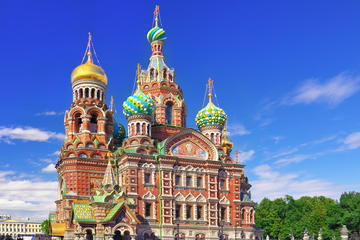Church of the Savior on Spilled Blood
TIME : 2016/2/22 13:53:59

Church of the Savior on Spilled Blood
Possibly the most iconic site in St. Petersburg after the Hermitage Museum, the Church of the Saviour on Spilled Blood stands out with its multicolored façade and onion-shaped domes. Sometimes called the Church of the Resurrection of Christ or the Resurrection Church, it was built on the site near the Griboedov Canal where Tsar Alexander II was assassinated in 1881. Completed in 1907, the church’s design was inspired by traditional Russian styles, as well as St. Basil’s Cathedral in Moscow and the Vladimir Cathedral in Kiev. The interior, designed by some of the most popular Russian artists at the time, features more than 7500 square feet of mosaic tiles covering the walls and ceilings.
The church endured significant damage over the years, first in the aftermath of the Russian Revolution and later during the Siege of Leningrad during World War II, when it was used as a morgue. Restoration of the church began in 1970 and it was finally reopened to the public as a museum in 1997, but was never reconsecrated. When you visit, don’t miss the large icon of St. Alexander Nevsky, the main iconostasis, the biblical scenes depicted in many of the mosaics and the ornate shrine on the exact spot where Tsar Alexander II was killed.
Practical Info
Sitting along the Griboedov Canal just off Nevsky Prospekt, the Church of the Saviour on Spilled Blood is hard to miss. The Nevsky Prospekt and Gostiniy Dvor subway stops provide the easiest access. While you can admire the exterior free of charge, a ticket is required to peruse the thousands of mosaics inside. Tickets are 250 rubles (about $7), while an audio guide can be rented for an additional 100 rubles ($3). Themed tours are also available for another 350 rubles ($10) and cover themes such as evangelical scenes in the mosaics and the architecture and exterior décor of the church.
